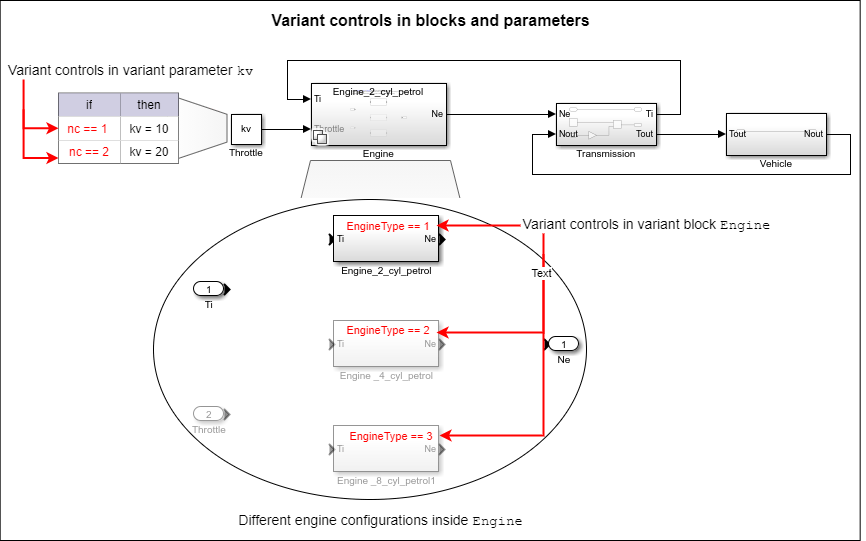Introduction to Variant Controls
The components of a Simulink® model that contain variants are activated or deactivated based on the variant choice that you select.
Each variant choice in your model is associated with a variant
control. Variant controls determine which variant choice is active. By
changing the value of a variant control, you can switch the active variant choice. While
each variant choice is associated with a variant control, only one variant control can
evaluate to true. When a variant control evaluates to
true, Simulink activates the variant choice that corresponds to that variant
control.
Suppose you want to simulate a model that represents a vehicle with three possible
engine configurations: 1-cylinder gas, 4-cylinder gas, and 8-cylinder gas. In this
scenario, the value of throttle is an input to the engine that differs for different
configurations. You could implement each engine configuration as a separate subsystem
inside the Variant Subsystem block named Engine and
then switch between the subsystems based on the value of EngineType.
Similarly, you could use a variant parameter kv to store multiple
values of throttle and then switch between the values based on the value of
nc. For example, if the value of EngineType is
1 and the value of nc is 2,
a throttle value of 20 is provided as an input to the
Engine_2_cyl_petrol subsystem during simulation.
In this example:
Structural variations are controlled by using the variant controls
EngineType == 1,EngineType == 2, andEngineType == 3in the Variant Subsystem block namedEngine. For more information on how to control structural variations, see Variant Control Modes in Variant Blocks.Value variations are controlled by using the variant controls
nc == 1andnc == 2in the variant parameterkv. For more information on how to control value variations, see Variant Control Mode in Variant Parameters.

